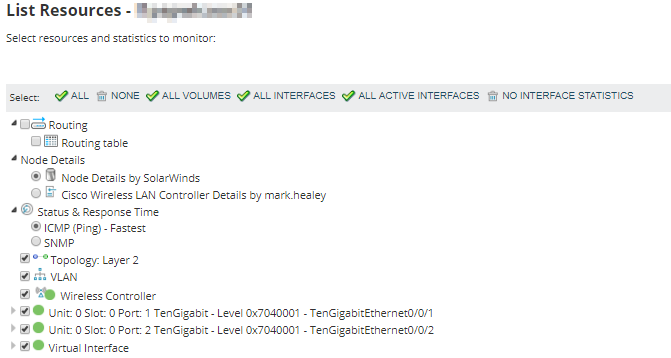I enjoy creating charts to graphically present information. In this example, I’ll demonstrate syslog. The same code (with slight modification) can be used for: alerts, traps; and events.
SELECT
- s.Hostname as [Node]
,'/Orion/images/StatusIcons/Small-' + s.node.StatusLED AS [_IconFor_Node]
,s.node.DetailsUrl AS [_LinkFor_Node]
, case s.SysLogSeverity when 0 then 'Emergency'
when 1 then 'Alert'
when 2 then 'Critical'
when 3 then 'Error'
when 4 then 'Warning'
when 5 then 'Notice'
when 6 then 'Informational'
when 7 then 'Debug'
end as [Severity]
, case when s.MessageType is null or s.messagetype = '' then '[Node Not in Orion]' else s.MessageType end as [Message]
,count(*) as [Total]
FROM Orion.SysLog s
--join Orion.SysLogSeverities sd on sd.SeverityCode=s.SysLogSeverity
where DAYDIFF(s.DateTime,getdate()) =0
group by s.MessageType, s.Hostname, s.node.StatusLED, s.node.nodeid, s.node.DetailsUrl, s.SysLogSeverity
HAVING count(*) > 1000
order by [Total] desc

select
convert(date,s.DateTime) as [Date]
,tmp.sum_syslog [Syslog]
,tmp.sum_IEEE_D [ILPOWER-5-IEEE_DISCONNECT]
,tmp.sum_LINK_UPDOWN[LINK_UPDOWN]
,tmp.sum_DUPLEX [DUPLEX_MISMATCH]
,tmp.sum_authfailure [AuthFailure]
,tmp.sum_Host_WEBMAIL [HOST_WEBMAIL]
,tmp.sum_Host_1_1_1_1 [Host_1_1_1_1]
,'Total' [Total]
from syslog s
join (select convert(date,s1.DateTime) [Date1]
,count(case when s1.Hostname='webmail' then 1 else null end) sum_Host_WEBMAIL
,sum(case when s1.Hostname='1.1.1.1' then 1 else 0 end) sum_Host_1_1_1_1
,sum(case when s1.MessageType='ILPOWER-5-IEEE_DISCONNECT' then 1 else 0 end) sum_IEEE_D
,sum(case when s1.MessageType='LINK-3-UPDOWN' then 1 else 0 end) sum_LINK_UPDOWN
,sum(case when s1.MessageType='CDP-4-DUPLEX_MISMATCH' then 1 else 0 end) sum_DUPLEX
,sum(case when s1.MessageType='SNMPv2-MIB:authenticationFailure' then 1 else 0 end) sum_authfailure
,sum(case when 1=1 then 1 else 0 end) sum_syslog
from syslog s1
where DATEDIFF(day,s1.DateTime,getdate()) <= 30
group by convert(date,s1.DateTime)) tmp on [Date1]=convert(date,s.DateTime)
group by convert(date,s.DateTime), tmp.sum_syslog, tmp.sum_authfailure
,sum_IEEE_D, sum_LINK_UPDOWN, sum_DUPLEX, sum_Host_WEBMAIL, sum_Host_1_1_1_1
order by 1 desc

The final product is lots of easily digestible information in tabular and chart form.

Enjoy
Amit